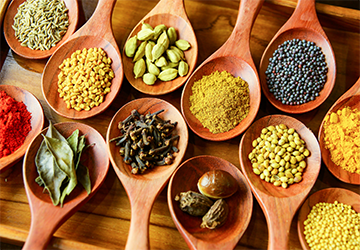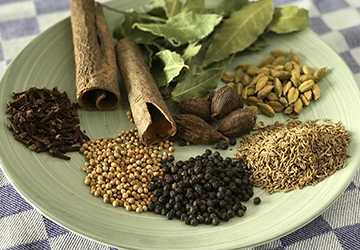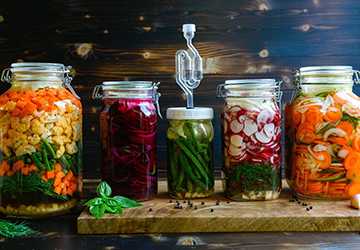7 Essential Spices for Indian Cooking and How to Use Them
Have you ever been in a supermarket and found yourself staring at the many Indian spices available? Most home cooks are always overwhelmed when cooking Indian foods. These spices are brightly coloured and emit appetizing fragrances, which may seem rather scary.
What if you apply more than the required amount of the product? Or too little? It is enough to discourage anyone from even attempting it.

This blog post will discuss some essential spices for cooking Indian foods. Are you ready to change the way you cook your meals? Are you prepared for the flavour of your life? Let's get started!
Spices: The Soul of Indian Cuisine
Unlike many other cuisines where spices are used as an addition to enhance the flavour of food, spices are the heroes of Indian cooking. They are the flavour kings and queens, making plain food items delicious.
But taste is not the only factor involved here. Indian spices make your kitchen smell like a spice market, making cooking an absolute pleasure. Many also contain vitamins and minerals that help improve the immune and digestive systems, among other things.
Due to culture and tradition, different parts of India have different favourites regarding spices. The scorching heat in the South is depicted as distinct from the fragrant mixtures of the North.
Prepare delicious Indian dishes at home with the same taste as restaurants. Let's start by discovering what wonders these spices can perform in your kitchen!
The Magnificent Seven: Essential Indian Spices
Let's move on to the fun part. These seven spices are the fundamental components of Indian food. Every one of them enchants the table. Let's get to know the main characters of your spice shelf now. Let's dive in!
1. Turmeric (Haldi)
This spice is golden and can rightfully be called a star. It has a somewhat sweet taste but a rather earthy and slightly bitter tone. Turmeric is used in many Indian dishes to give them a yellow hue.
It is used in curries, rice dishes, and even beverages such as golden milk. It is also very healthy and contains anti-inflammatory agents.
Pro tip: Turmeric should be kept in a cool, dark area. Even light and heat can affect it and cause it to lose its bright colour and intense flavour.
2. Cumin (Jeera)
Cumin's taste is rich and slightly nutty with an earthy note. It is an essential spice in most Indian recipes. Its warm fragrance is sure to please, and your kitchen will smell good after cooking.
It can be used whole or crushed in dals, curries, and spice mixes. It is also perfect for digestion!
Store cumin seeds in an airtight container. They will remain intact for some months and enrich your preparations.
3. Coriander (Dhania)
Coriander seeds are mild in taste and quite reminiscent of lemon. They can be compared to the much-needed interlude in hefty meals.
Ground coriander is used in garam masala and most curry powders. It also goes very well with cumin in dishes that need a pinch of the spice.
It is recommended to store coriander seeds whole and only grind them as and when required. This helps preserve the taste and makes them more exciting to eat.
4. Red Chili Powder (Lal Mirch)
This fiery spice is what makes Indian dishes so hot. It adds not only heat but also richness and texture to the food.
Employ it in curries, marinades, and dry rubs. A small portion is always better, so begin small!
Store chilli powder in an airtight container to protect it from light. This is important for preserving the sauce's bright colour and spiciness.
5. Garam Masala
Garam masala is not one spice but a mixture or combination of spices. It usually comprises cinnamon, cardamom, cloves, and black pepper.

This aromatic mix contributes warmth and depth of flavour to the meals. It is frequently applied at the end of the cooking process to bring out the desired flavours.
Garam masala should be kept in a closed jar, preferably in a cool and dry place. For the best taste, consume within 3-4 months.
6. Mustard Seeds (Rai)
Packed with nutrition, these seeds are as tiny as poppy but mighty in flavour. They have a somewhat bitter taste, like horseradish, but when used in cooking, they lose the bitterness.
Please place them in hot oil at the beginning of cooking for a nutty flavour foundation. They are frequently used in South Indian preparations.
It is advised to store mustard seeds in an airtight container in a cool area. If well preserved, they can be kept for up to one year.
7. Cardamom (Elaichi)
Cardamom has an aromatic, sweet, flowery smell with a mint flavour. It is added to sweet and savoury preparations.
Whole pods may be used in rice dishes, while the seeds are crushed and used in desserts. They are also excellent in chai tea!
Whole cardamom pods should be stored in an airtight package. It is best to crush them just before use to enjoy the best taste of the biscuits.
Spice Up Your Cooking: Tips and Tricks
Now that you know your spices, how can you use them? Here are some ways to make the most of these flavour bombs in your kitchen.
Begin with whole spices whenever possible. To bring out their taste, heat in a dry pan. Then, you can grind them fresh to get the maximum impact.
For curries, heat cumin seeds in hot oil. Next, add turmeric and chilli powder. Finally, garnish with a pinch of garam masala.
Add mustard seeds to dals for a nutty flavour. Cardamom is a wonder in biryanis and desserts.
Remember that one has to start with moderate amounts of input at the onset. You can accumulate it endlessly, but removing something that has been said is impossible. Savour it as you go, and let your taste buds do the talking.
Experiment with different combinations. And that is how you will find the unique blends that will define you.
Welcome to Your Indian Food Journey
Are you ready for a change in the kinds of foods you prepare? These seven spices are your ticket to the colourful realm of Indian cooking.
Every spice reveals a new dimension of taste, from turmeric's bright yellow to the garam masala's hug. They are delicious and beneficial for our health in many ways.
So why wait? Get these spices and try out your luck. Your palate will be the first to notice. Who knows? You may find a new dish you like during the process.
The best thing about cooking is that it could be a more precise activity but an adventure. What is important is that you take the ride with the missteps included.
This is how you will learn all about Indian spices and, more importantly, how to use them optimally. Happy cooking!





